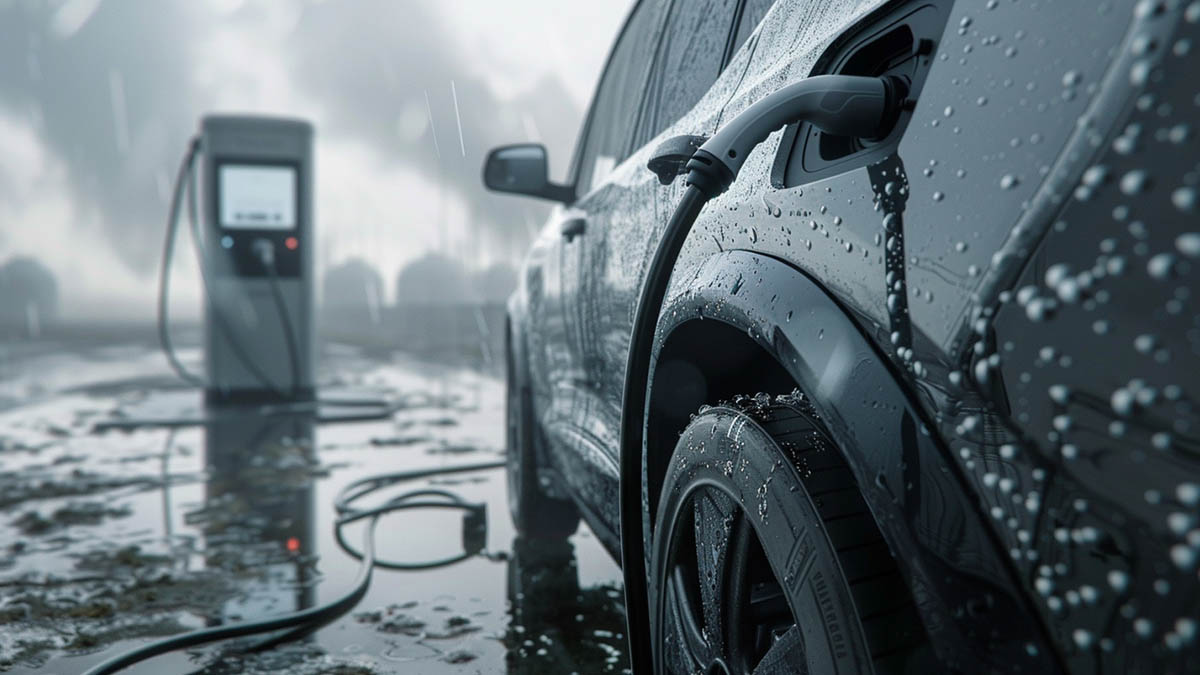 How to Select a Durable DC Charging Connector for Harsh Outdoor Conditions
How to Select a Durable DC Charging Connector for Harsh Outdoor Conditions
Apr 15, 2025
When you install a DC charging system in an outdoor or industrial setting, the connector often becomes the most exposed part of the entire setup. It's regularly handled, subjected to temperature changes, moisture, dust, and sometimes even physical impact. Choosing a connector that can endure these conditions without compromising performance is not just good engineering—it's essential for safety and long-term reliability.
Understanding the Environment First
Before getting into technical specifications, take a step back and look at where the connector will be used. Charging stations near coastlines, logistics depots, construction zones, or areas with extreme temperature shifts all pose different challenges. Understanding the environment will help determine the type of protection needed.
Application Environment
Key Challenges
What to Look For
Coastal Areas
Salt mist, humidity
Salt spray resistance (48h+), corrosion-proof contacts
Industrial Zones
Dust, oil, vibration
IP65/IP67 rating, anti-vibration features
Cold Regions
Freezing, condensation
Material stability at -40°C, sealing against moisture
High Traffic Chargers
Frequent use, wear
30,000+ mating cycles, wear-resistant materials
Key Performance Features to Consider
Durability & Lifespan A connector in a high-use environment should withstand thousands of plug-ins without loss of contact pressure or wear to the housing. Look for validated durability tests with real-life simulation.
Ingress Protection (IP) Rating A good outdoor connector should have at least an IP55 rating. If it's directly exposed to water jets or temporary submersion, consider IP67 or IP69K.
Temperature Performance The connector must handle ambient extremes, but more importantly, it must manage internal heat during charging. Materials and contacts should remain stable from -40°C to +85°C, and heat dissipation should be effective.
Vibration and Shock Resistance In mobile or industrial applications, connectors are subject to vibration. Choosing a design tested under standards like USCAR-2 or LV214 helps ensure stable long-term contact.
Salt Spray and Corrosion Resistance Especially relevant for marine environments or winter road conditions. Connectors with over 48 hours of salt spray testing and corrosion-resistant plating last longer in the field.
Ease of Handling While performance matters, so does the human factor. Ergonomic grip design, easy latching mechanisms, and clearly visible status indicators help ensure safe use in any condition.
Proven Reliability: Workersbee DC Connector Solutions
Workersbee has developed a suite of DC charging connectors engineered specifically for harsh outdoor and industrial applications. Among them, the Workersbee DC 2.0 connector is designed and tested to meet the most demanding environmental requirements. What sets our product apart is not just lab-tested performance, but integration of structural innovations tailored for real-world durability.
Key performance and structural highlights from Workersbee’s engineering validation:
Double-layer sealing system: An independent sealing structure between the power terminals and signal terminals significantly enhances waterproof reliability. This design minimizes the risk of internal condensation and corrosion, even in high humidity conditions.
Optimized liquid cooling system: The integrated cooling loop features a 5mm inner diameter flow channel to balance flow resistance and thermal conductivity. This ensures consistent heat dissipation even under high-current operation.
Flexible cable assembly: Workersbee’s design supports multiple cable size configurations, including large-diameter cables suited for high power delivery. A specially designed clamping mechanism ensures reliable strain relief even under frequent bending and flexing.
Advanced contact material: Contacts are treated with corrosion-resistant silver alloy and undergo extensive salt spray testing for over 48 hours according to ISO 9227 standards.
Thermal and vibration testing: The connectors have passed thermal cycling between -40°C to +85°C, and vibration testing in compliance with automotive-grade standards (LV214/USCAR-2).
These features are not only theoretical—each connector undergoes a complete production line inspection, including:
100% mechanical locking force test
High-voltage insulation withstand test
Visual inspection of sealing
Built for Real-World Conditions
A harsh environment doesn’t have to mean frequent connector failures or safety compromises. With the right materials, structural design, and test validation, it's possible to build connectors that stand up to both nature and daily use.
At Workersbee, we’ve taken the time to understand what these environments demand—then engineered our connectors to meet and exceed those expectations. If your charging infrastructure is going to be used outdoors, on the road, or in challenging industrial settings, choosing a proven, well-tested solution like the Workersbee DC 2.0 can make all the difference.
For technical specifications, samples, or integration support, feel free to reach out to our team.
Read More

 How to Select a Durable DC Charging Connector for Harsh Outdoor Conditions
How to Select a Durable DC Charging Connector for Harsh Outdoor Conditions